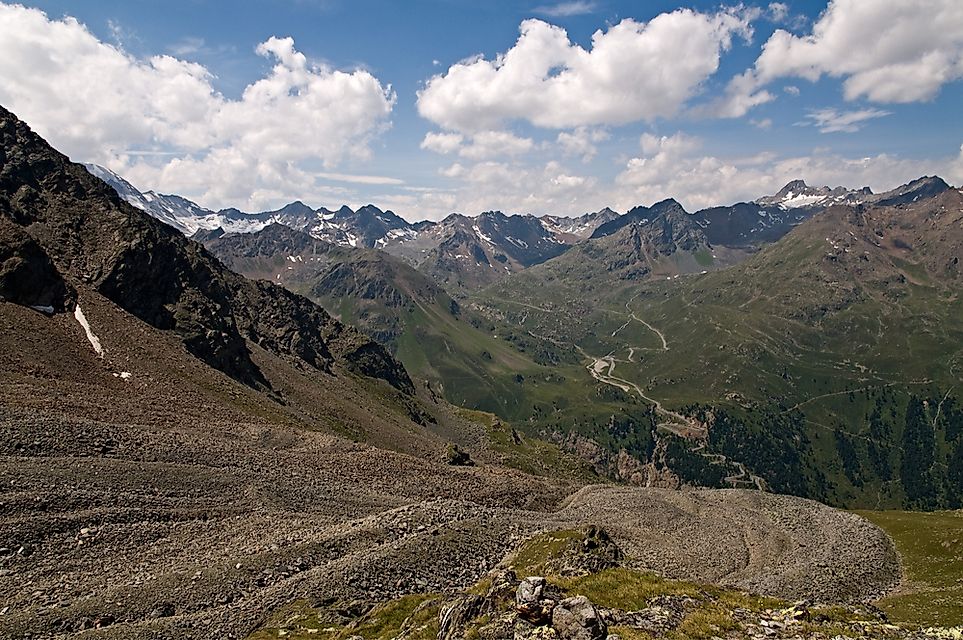What Is a Rock Glacier?

A rock glacier is a geomorphological landform composed of rock fragments that move slowly down a mountain as a result of gravity. It may consist of a mass of ice covered with rock debris or mass of rock with interstitial ice. Rock glacier sometimes extends outwards and downslope from a glacier or talus cones. Unlike ice glaciers, rock glaciers have very little visible ice on the surface. The slow movement also helps to hide the identity of a rock glacier. The rock materials are often from valley walls. A rock glacier may be as deep as 100 feet and up to 1 mile in length. There are two types of rock glaciers: glacial rock glaciers and periglacial glaciers.
Formation of Rock Glaciers
Rock glaciers can form in several ways. Some are formed by melting ice glaciers covered by a landslide or simply by the wasting of an ice glacier that contains ice debris. A rock glacier is formed when slow-moving glacial ice is covered with debris or when frozen soil creeps downwards. There are two important conditions required for a rock glacier to form: permafrost and low ice velocity. When a debris-covered glacier recedes, a glacial rock glacier is formed. As glaciers shrink, they pick up debris, and glacial ice is eventually replaced with ice cored rocks. In order to a periglacial rock glacier to form, permafrost is required instead of glacial ice.
How Rock Glaciers Grow and Shrink
Rock glaciers develop from precipitation, runoff, and spring discharge. The ice rock mass grows from talus dropping from valley walls and landslides. When the sun heats the surface of a rock glacier, the ice or snow on the surface melts and moves downward into the glacier, carrying mud and fine rock debris. Snow, water, and ice can be lost from the rock glacier through the processes of ablation or runoff. Thus, the surface of a rock glacier is often covered with angular boulders of different sizes.
Movement
The movement of a rock glacier down a mountain is caused by the deformation of ice contained in the rock, which causes the surface to resemble a glacier. A rock glacier can move for up to 3 kilometers. A rock glacier moves or creeps at a slow rate, and its speed is dependent on the amount of ice present. Climate changes, especially increased temperatures, can influence rock glacier movement and dynamics. Short-term changes in velocity and movement rate is the result of temperature variation.
Uses and Hazards
Rock glaciers are a source of water for many parts of Chile. The Chilean Andes has plenty of rock glaciers which supply water to Santiago, which is the capital of Chile. However, ongoing mining activities in the high mountains have led to the degradation of two rock glaciers. Rock glaciers can also be interesting places to visit, such as the Yellowstone rock glaciers, which have formed along the Mt. Holmes trail in Yellowstone National Park. However, rock glaciers covered with large rocks can be dangerous, as the loose rocks can be unsteady.











